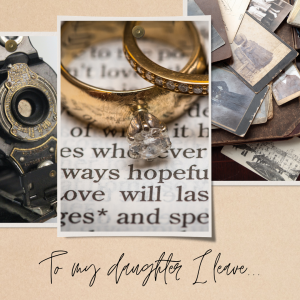When you prepare your estate plan, typically there are formalities required. In most states, a Will must be signed by the testator (the person whose property is governed by the Will) and that signature must be witnessed by two people. The rules vary a little from state to state. For example, in some states, three witnesses are required. In other states, a Will need not be witnessed by others, as long as it is entirely in the handwriting of the testator and signed by the testator at the end of it. Though the rules vary a little among the states, they are quite specific and there is little leeway for mistakes.

However, you can build flexibility into your plan. Your Will (or Trust) can say how your tangible personal property is disposed of. It can reference that you might do a document that disposes of such property and you might do it at a later time or even change it from time to time.
What is “tangible personal property” that could be controlled by such a list? “Tangible personal property” is tangible things, i.e. that you can touch. Also, it must be personal property, i.e., it cannot be real estate such as a home or land. It cannot be cash. Tangible personal property would include furniture, furnishings, household goods, rings, necklaces, etc. Often, people will include things on such a list that may not be their most valuable possessions, but which have deep emotional value to the family.
For example, Mary had a Will prepared. The Will referenced that she could have a tangible personal property list. She signed the Will in accordance with her state’s formalities, i.e. in the presence of two witnesses who also signed it. The Will provided that if Mary didn’t have such a list, the property would go equally to her three children, Liz, Gary, and Mike. Mary prepared a list and identified her dining room set and said it should go to Gary. She identified her wedding ring and said it should go to Liz. She also identified her grandmother’s tea service and said it should go to Mike. When Mary had conversations with her children, she realized that she had it wrong. Liz really liked the tea service. So, Mary prepared a new list stating who should get what and she signed it and dated it. By doing so, she didn’t have to see her estate planning for this simple change. She could do it herself by simply 1) identifying the items(s) in writing, 2) identifying to whom each item should go, and 3) signing and dating the list.
Of course, if Mary’s situation changes or there’s a substantial change in the law, Mary should see her estate planning attorney to see if other changes are appropriate or required. An estate plan with the appropriate flexibility built into it can allow you to do simple changes regarding tangible personal property.
For more information about Steve Hartnett, author of this article, and to see others he has written, click here.
Copyright © 2021 American Academy of Estate Planning Attorneys, Inc. All rights reserved.

